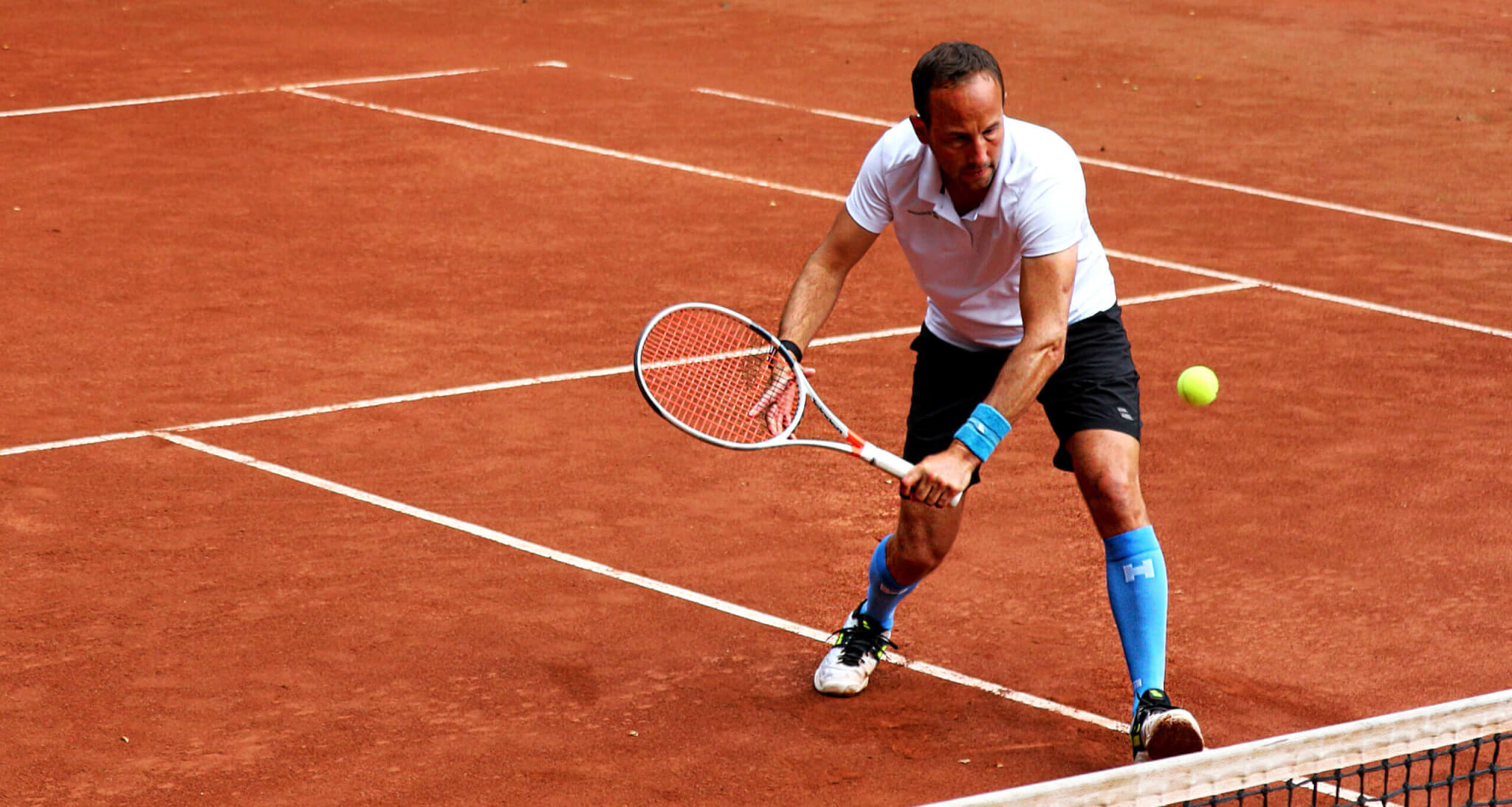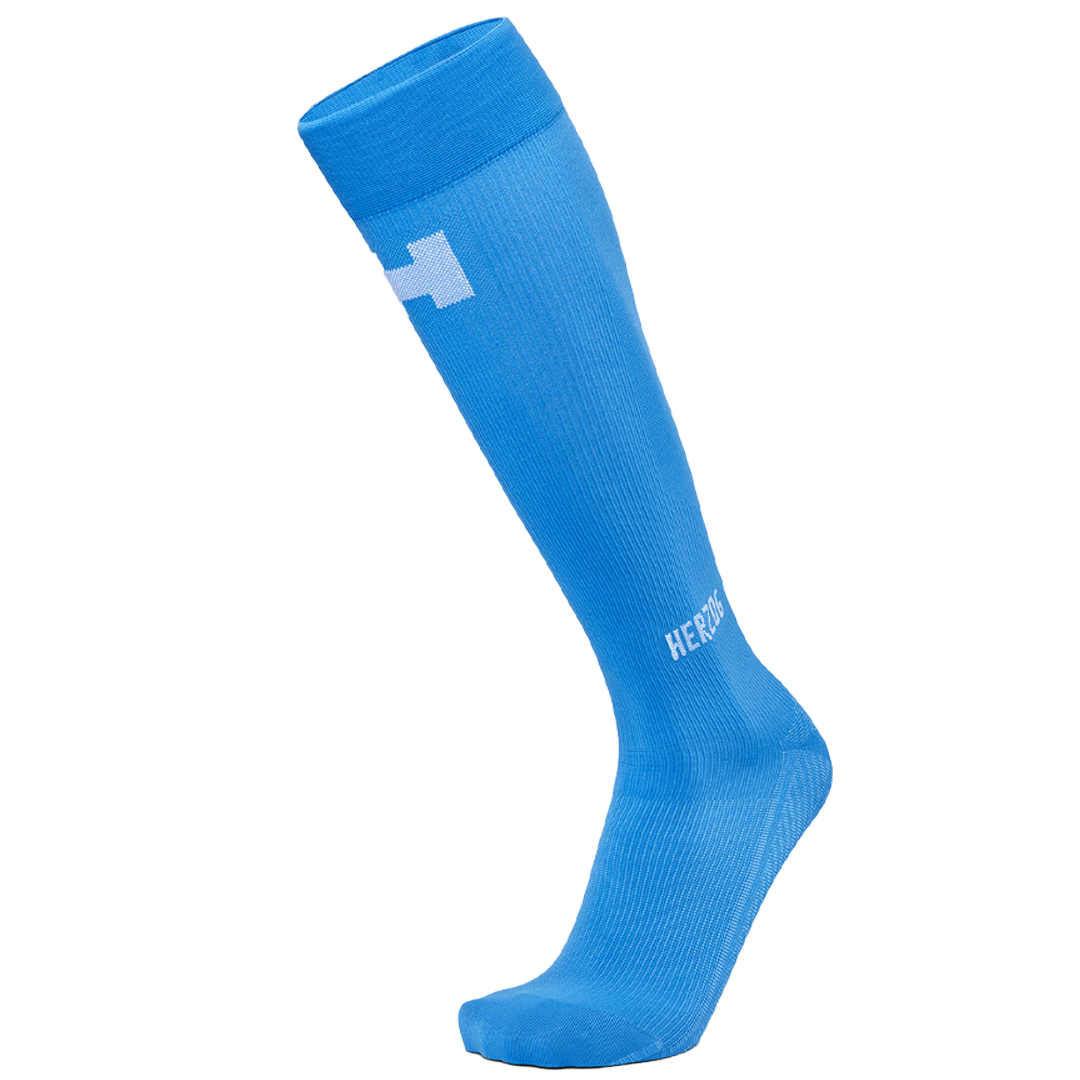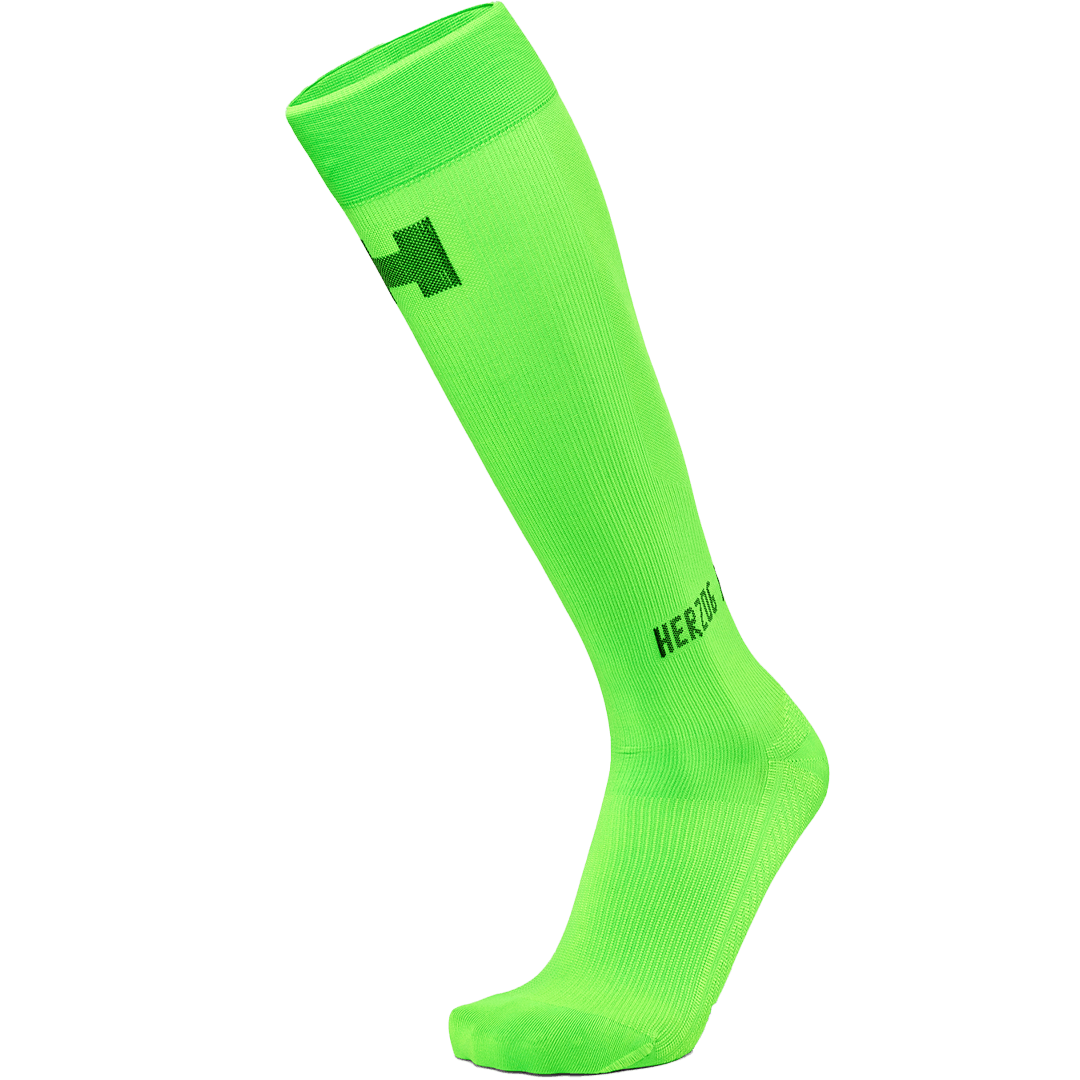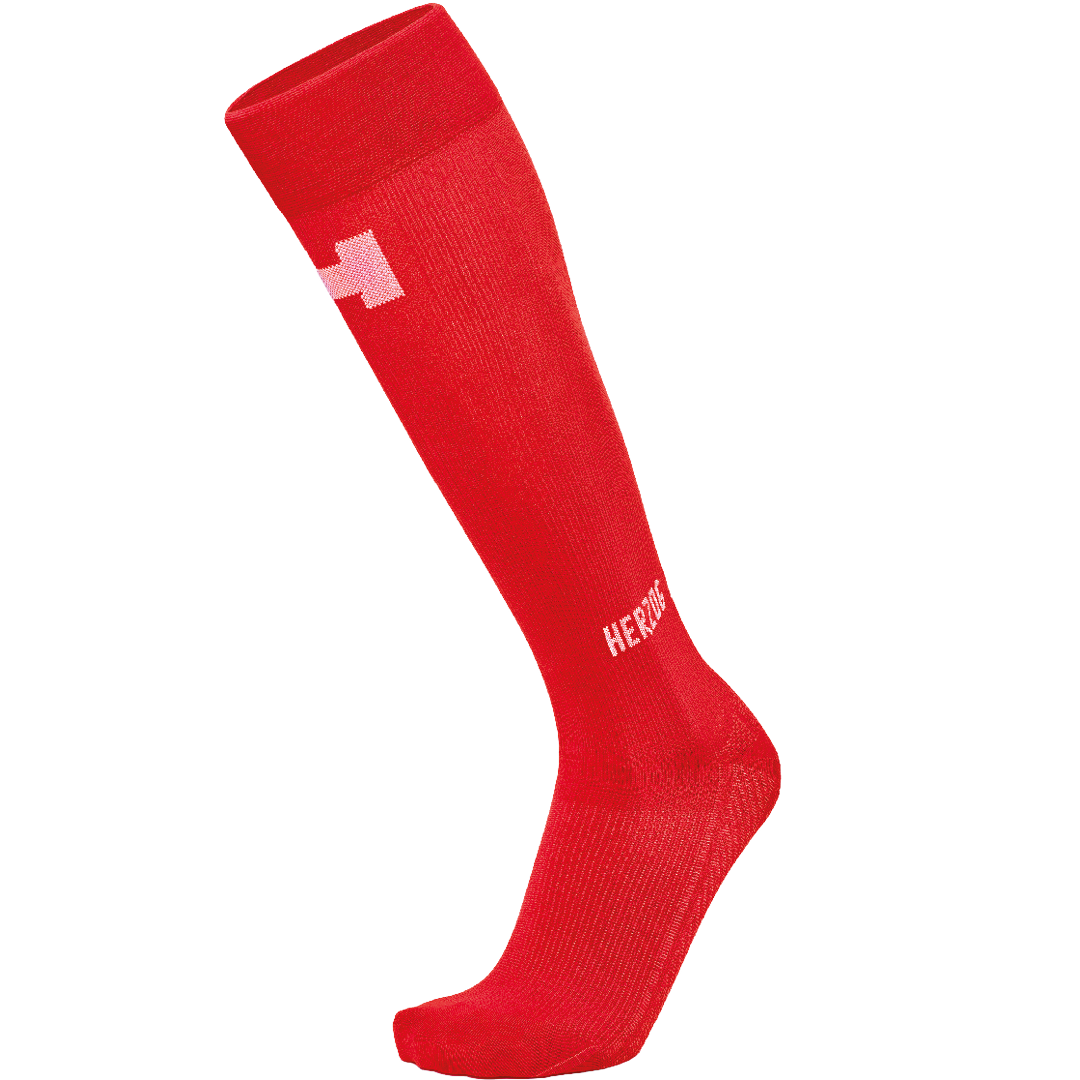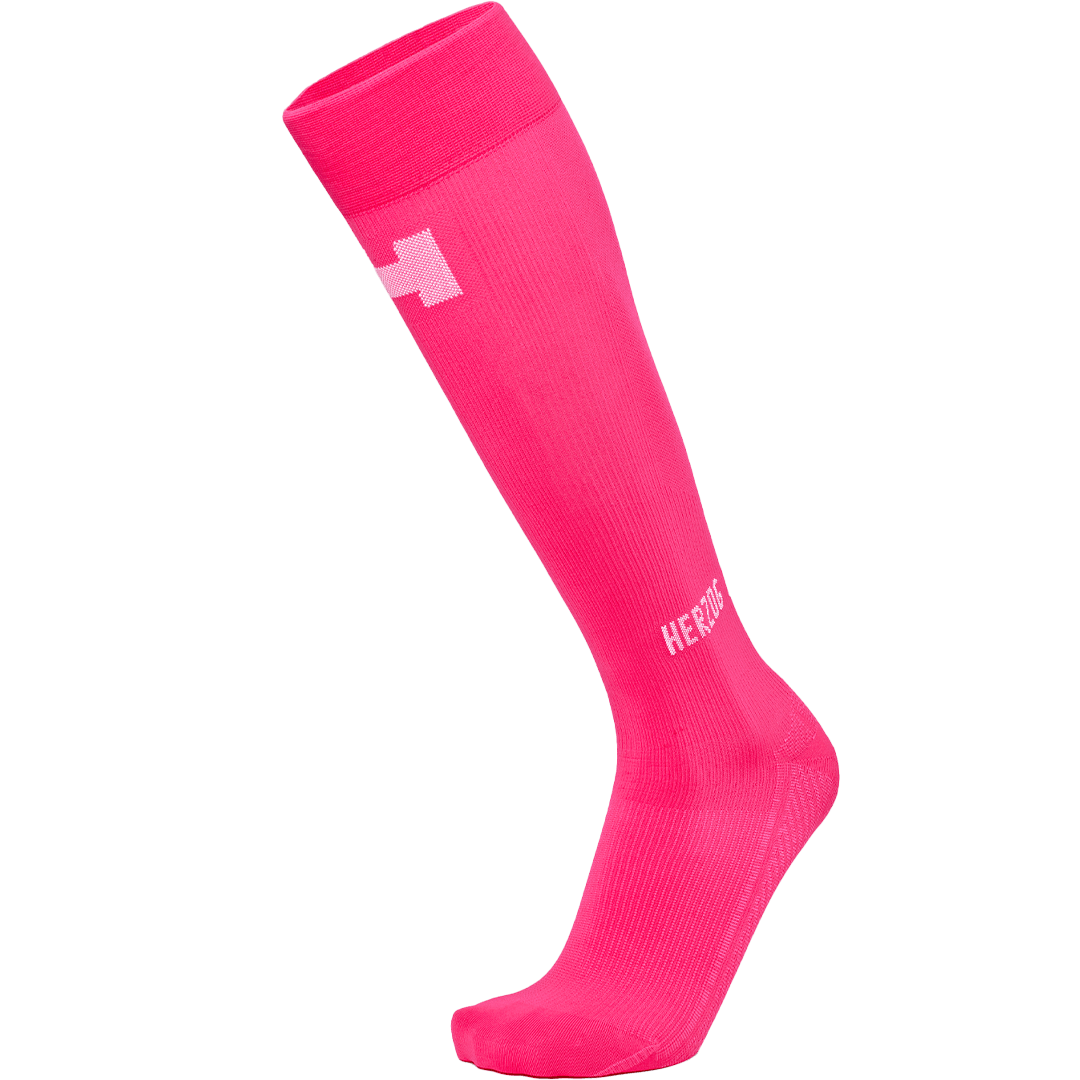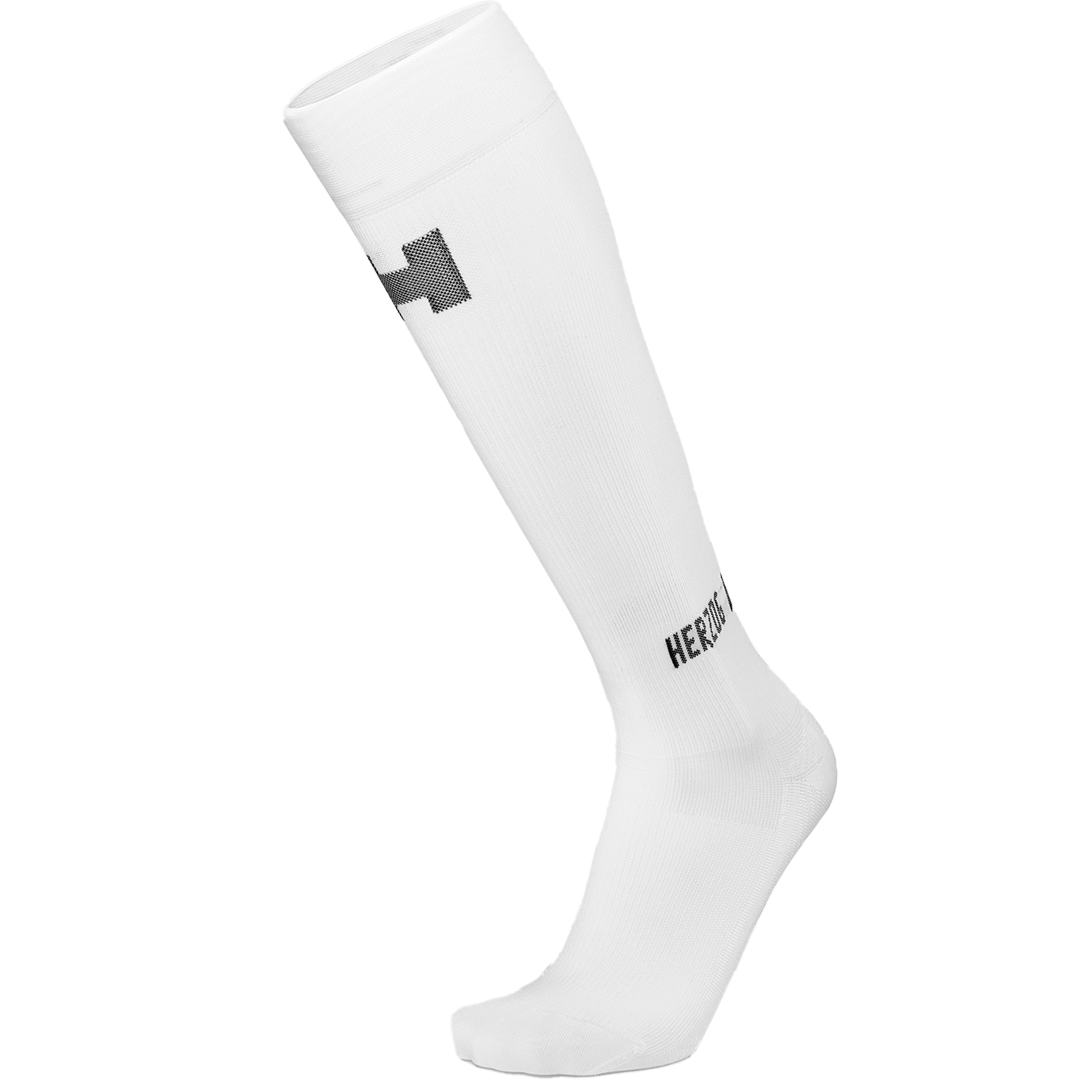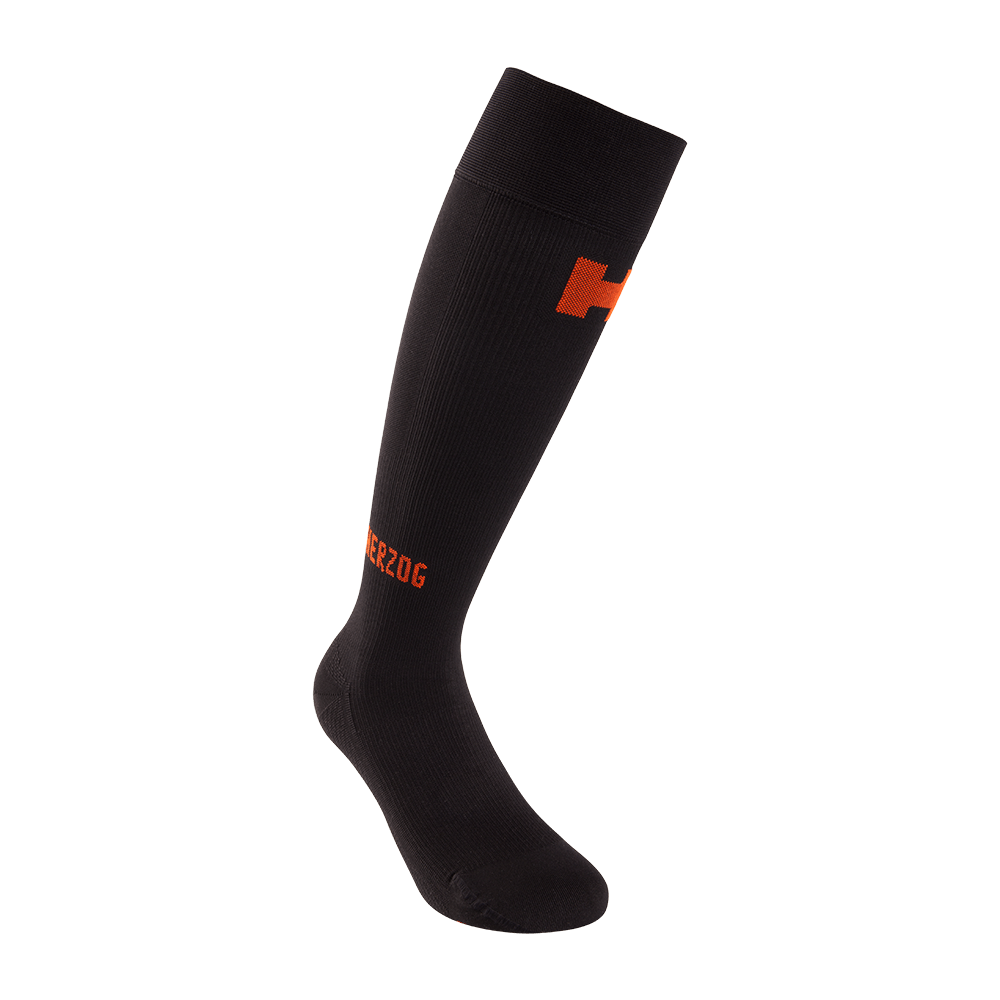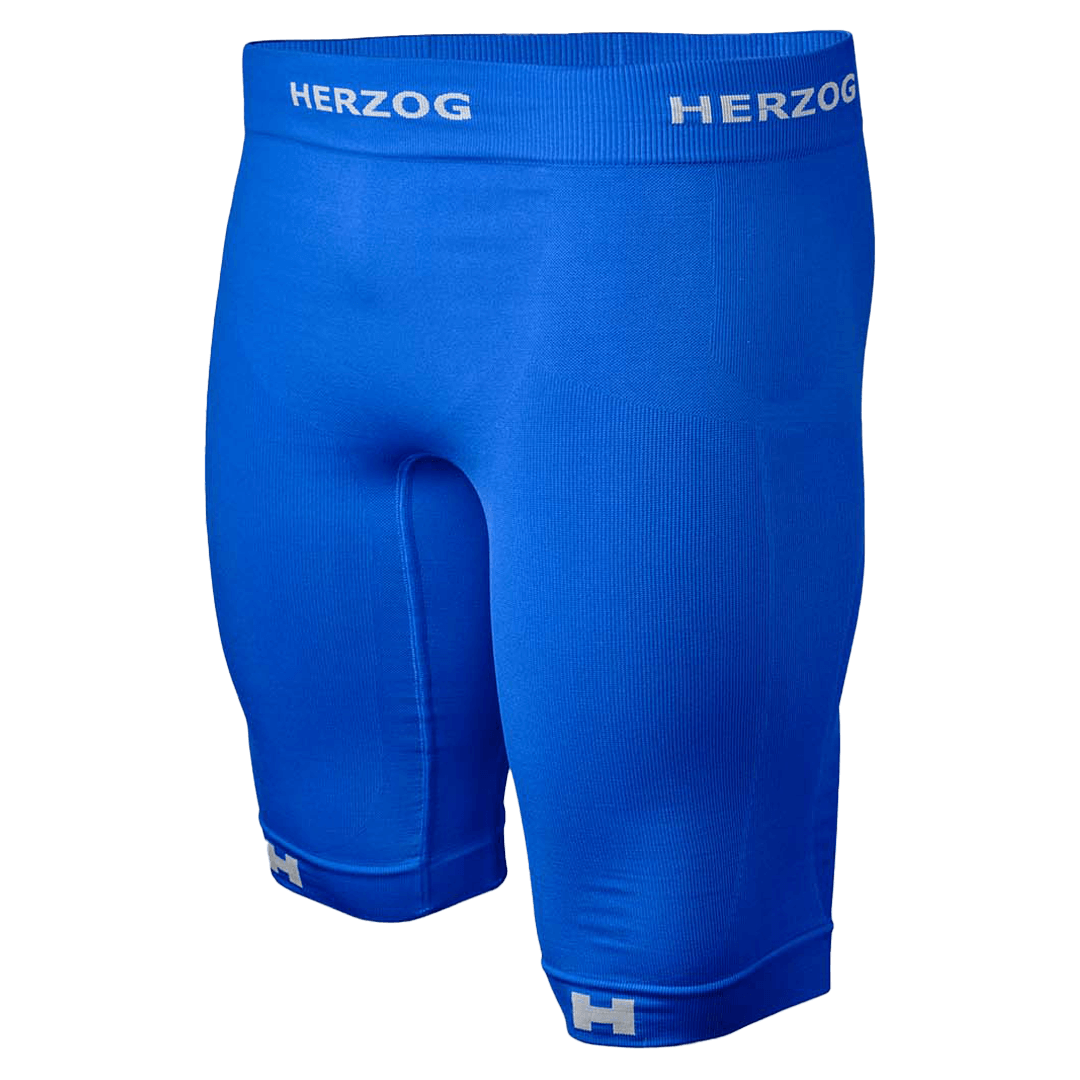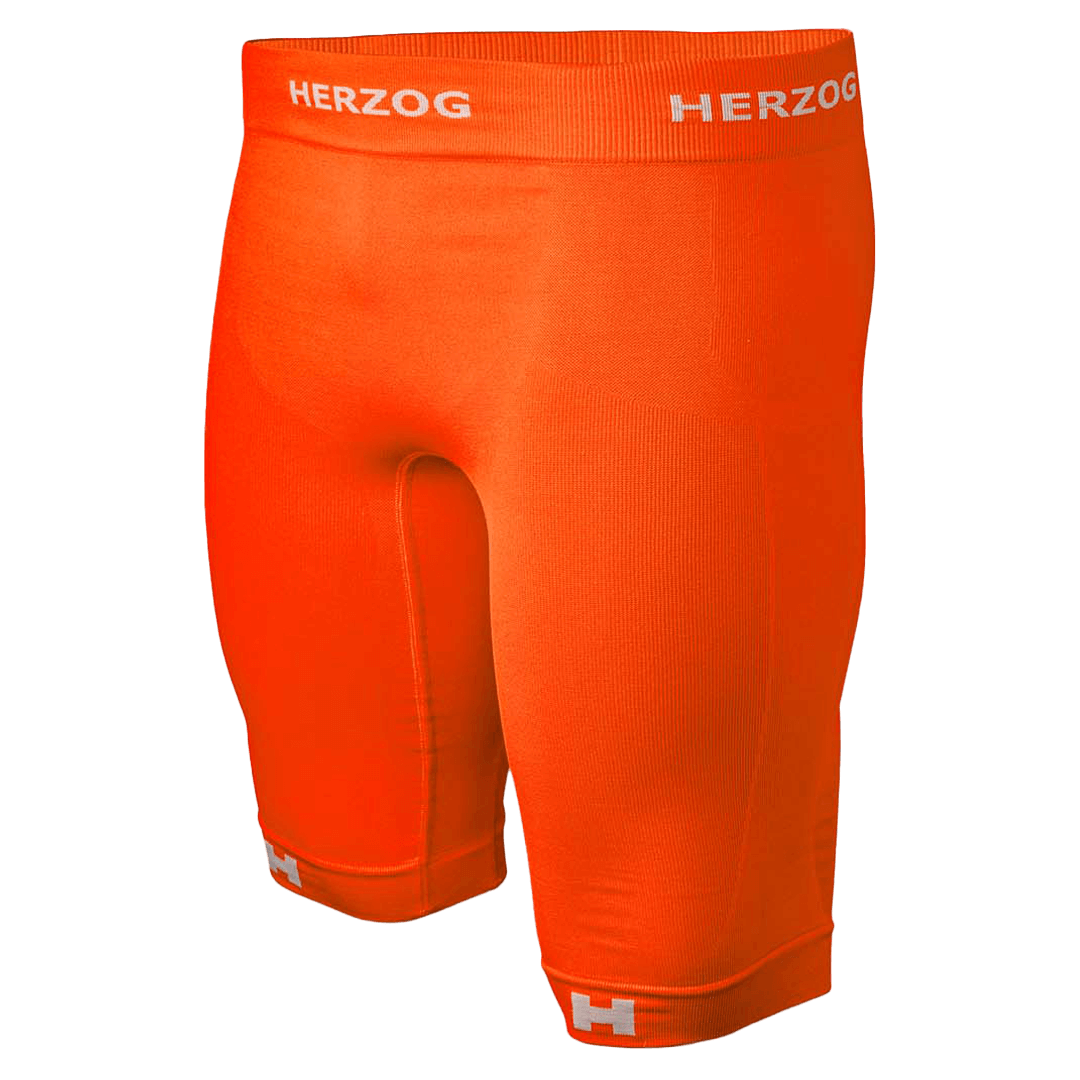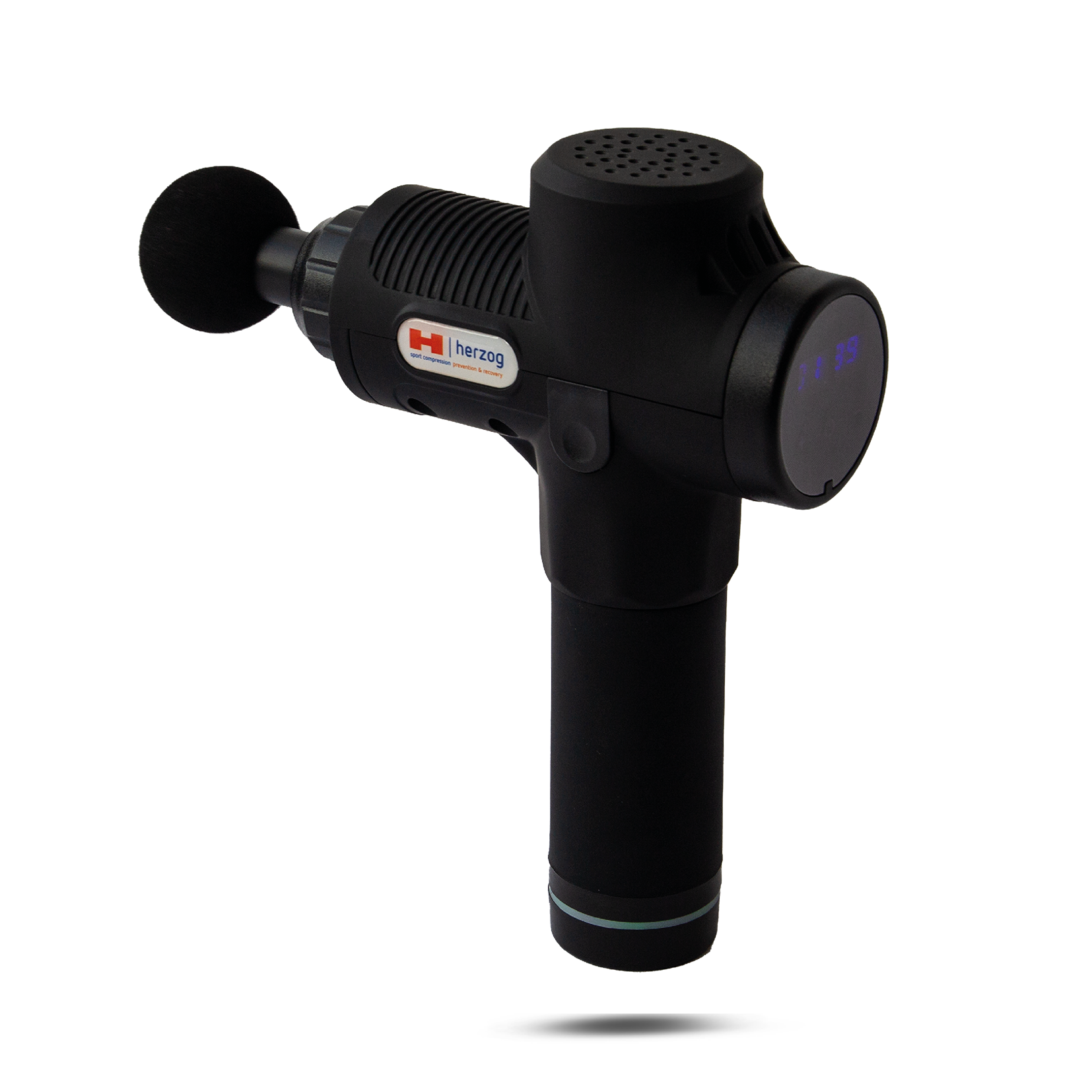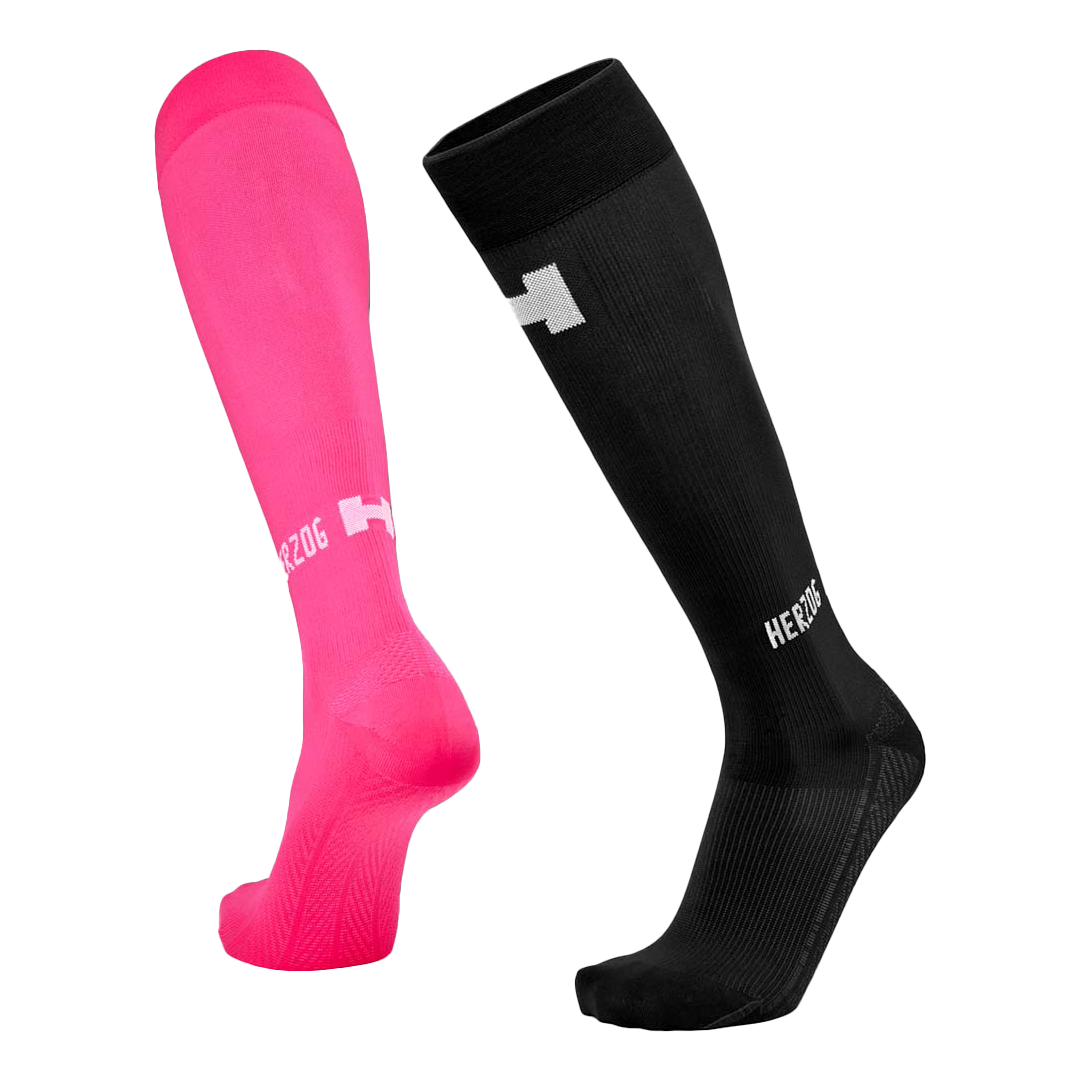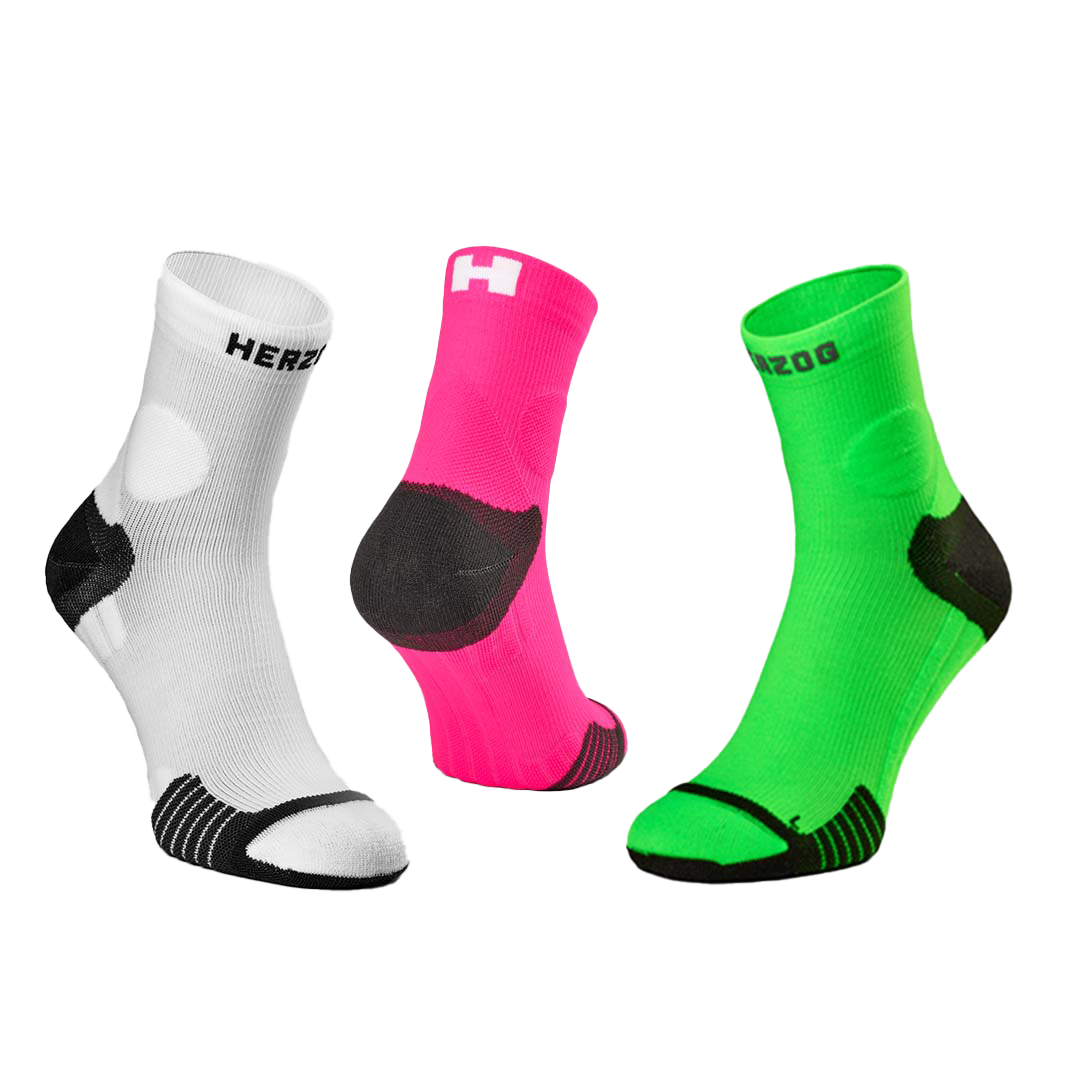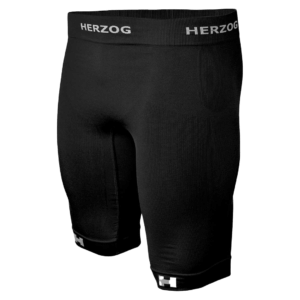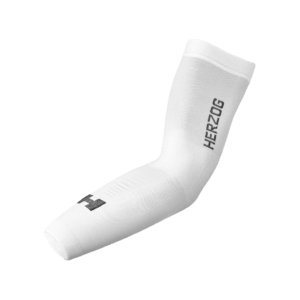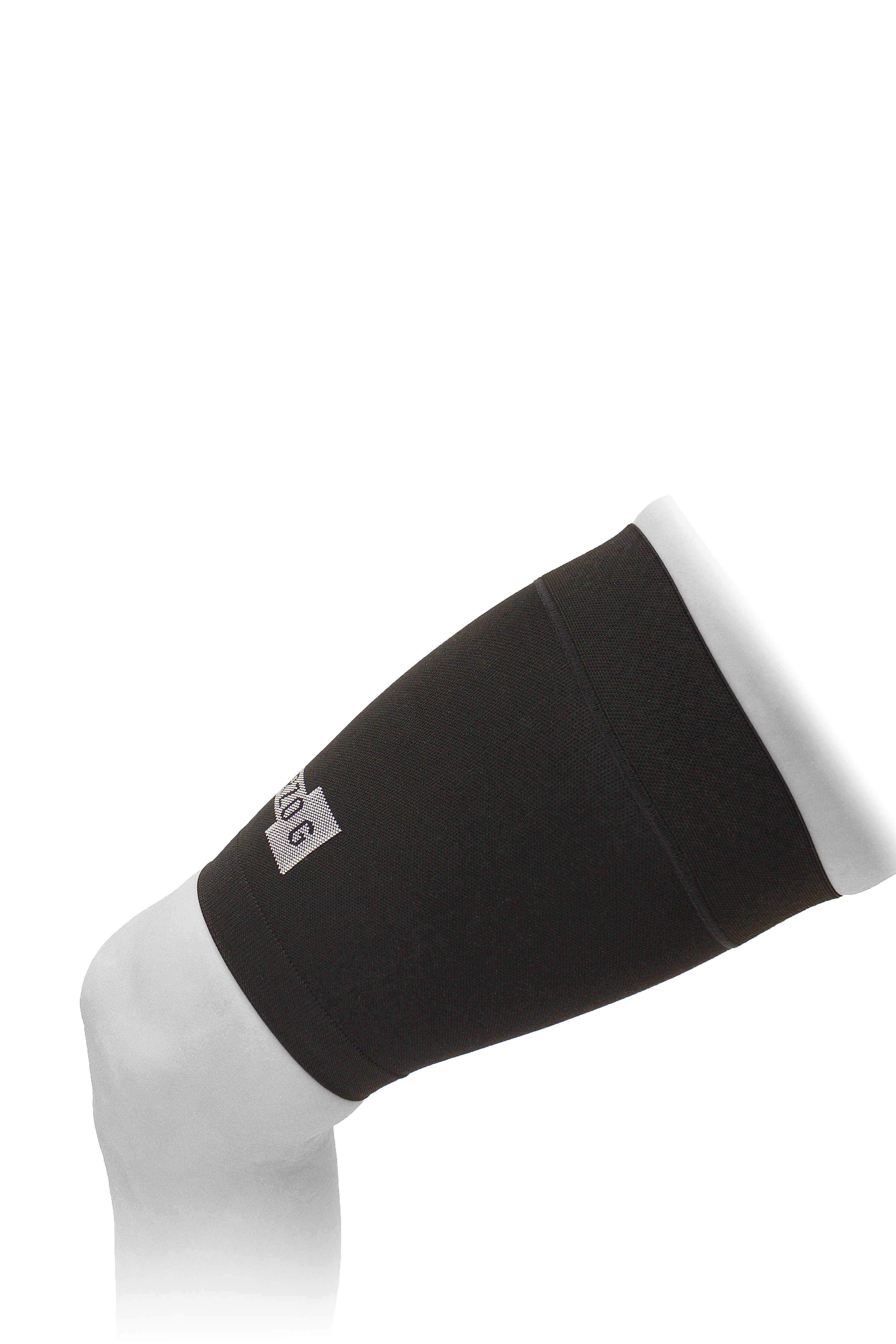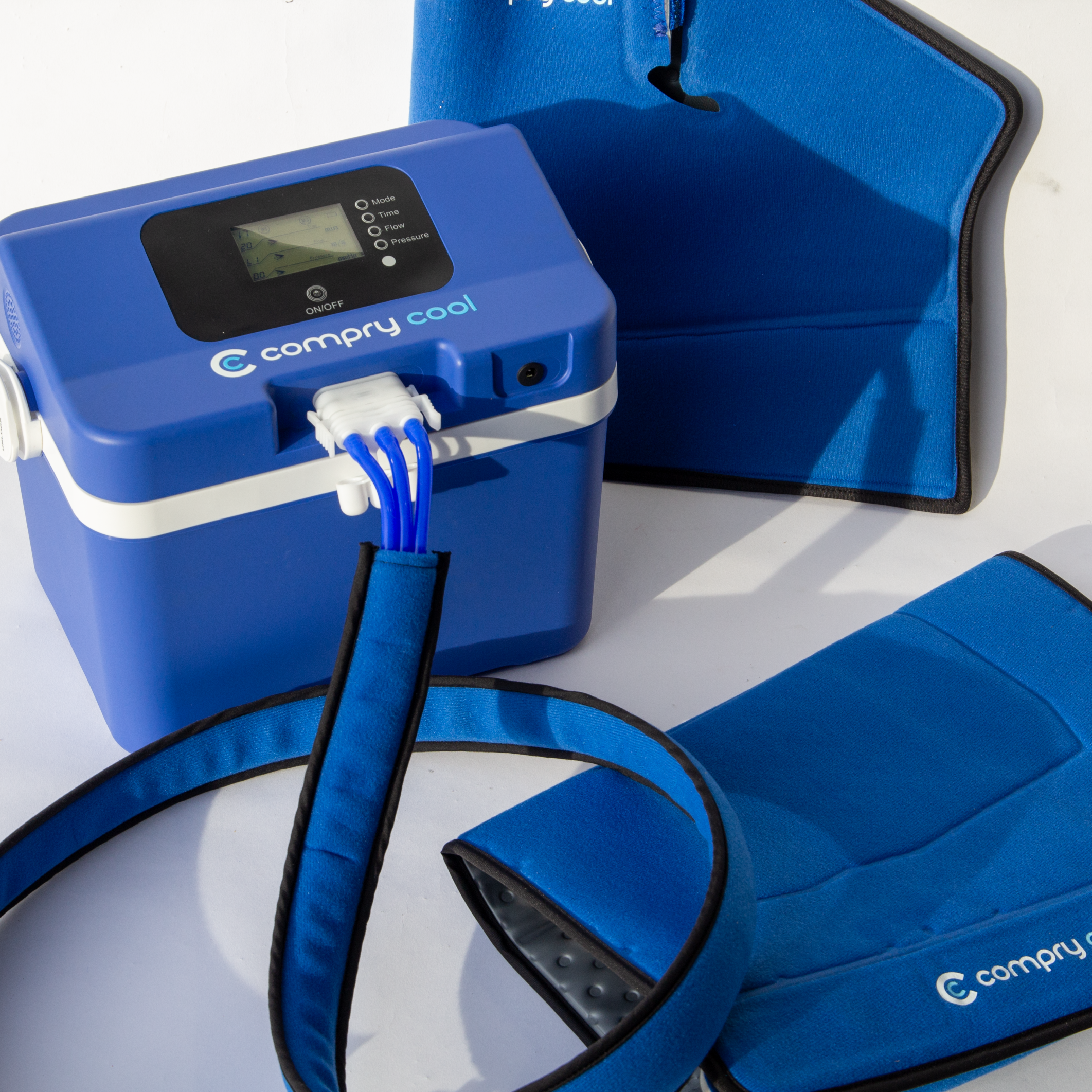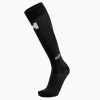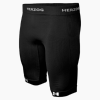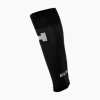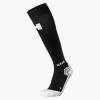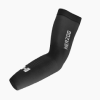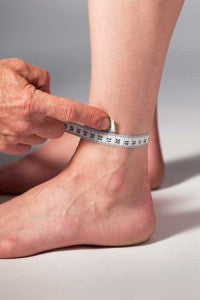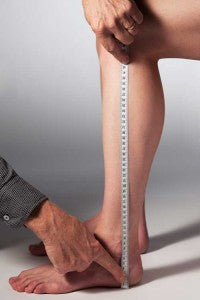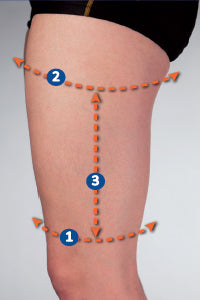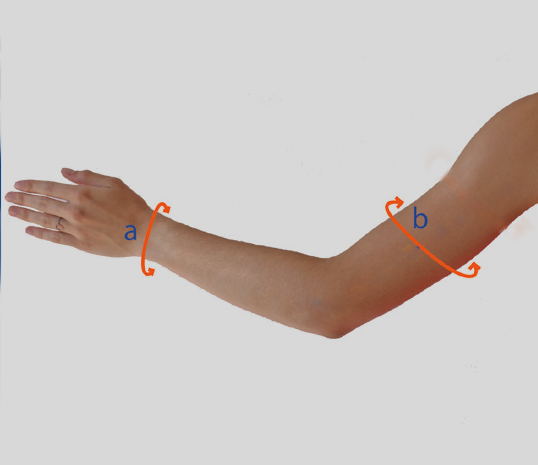What causes a muscle tear?
What is a calf strain (tennis leg)?
A calf strain occurs when muscle tissue tears. It’s a typical sports injury seen in activities that involve explosive movements. In mild cases, it can feel like cramping or a slight pull, while in more severe cases it’s a significant tear in the muscle fibers, often on the inner side of the calf.
Athletes usually describe the moment of injury as a sudden, sharp pain—like being struck across the calf with a whip.
This injury is most common among:
- Athletes aged 35 and older
- Tennis players (e.g., during a serve or when sprinting for the ball)
- Volleyball players (especially when jumping or smashing)
- Sports with explosive movements and short sprints

First aid for a calf strain: what can you do right away?
The first 48 hours after a calf strain are crucial for recovery. Acting quickly and correctly can help prevent complications and speed up the healing process.
Cooling: Apply ice or cold running water to the painful area. Make sure the ice is not placed directly on the skin to avoid frostbite.
Compression: Put on Herzog PRO Compression Socks as soon as possible. The targeted compression supports the injured muscle and helps reduce swelling.
Elevation: Keep the leg elevated to minimize fluid buildup.
Curious about more recovery tips and how to safely get back to activity?
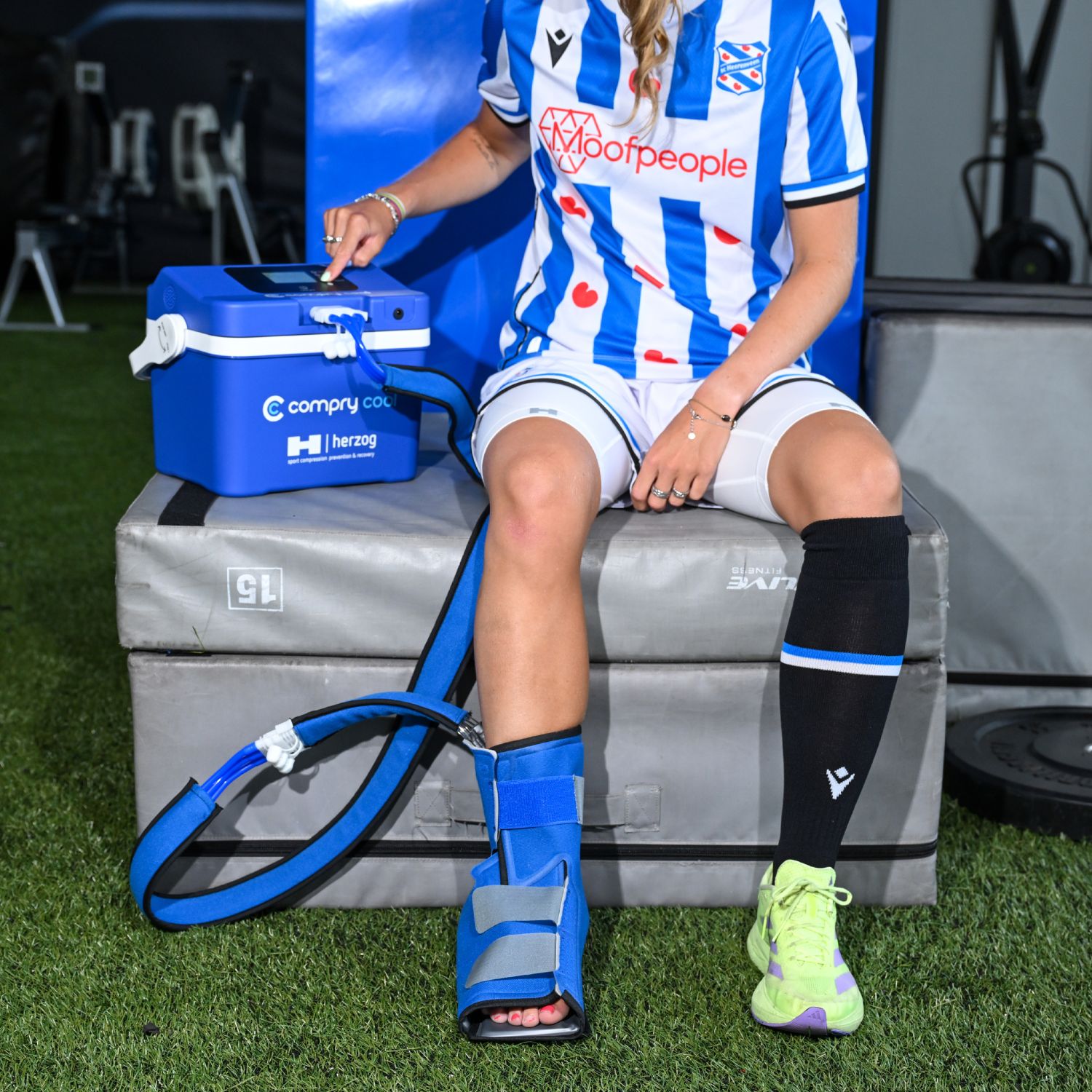
Recovering from a muscle tear
After a day or two, the worst of the pain and swelling should subside. At this point, you can begin to gradually resume activity. Take your time and stop immediately if you experience any pain. Cycling or swimming are excellent exercise options as they improve blood circulation and aid in recovery. Additionally, incorporating stretching exercises is advisable to prevent the calf muscle from becoming shortened. Throughout this process, wearing Herzog compression socks remains very important.

How can I prevent a muscle tear?
Prevention is better than cure. Follow these tips to minimize the risk of a calf strain:
- Do a proper warm-up with extra focus on the calf muscles
- Include stretching exercises before and after training or competition
- Wear PRO Compression Socks during sports to reduce impact stress and keep the calf muscles compact
- Avoid explosive effort in cold, damp conditions without proper preparation
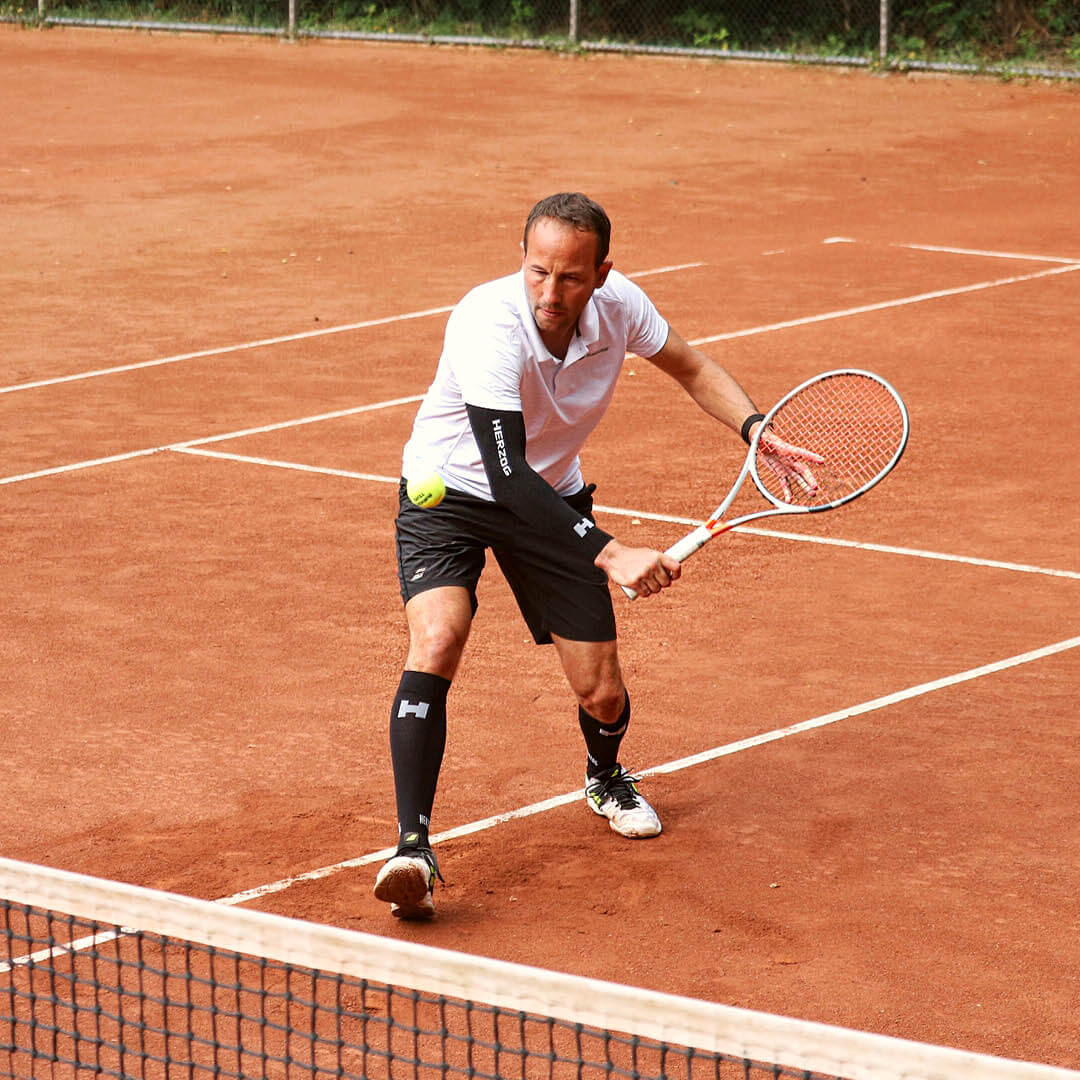
Muscle strains like calf tears and more
Muscle injuries like a calf tear need rest, but targeted compression can support recovery. Learn more about other common injuries in our full overview.
→ View all injuries

Kim van Wijk
Physiotherapist and manual therapist
"We are very pleased with the effectiveness of the Herzog socks and recommend them to our tennis patients, as well as to other athletes. We advis wearing the socks during injury recovery and continuing to use them to help prevent lower leg issues."
"We are very pleased with the effectiveness of the Herzog socks and recommend them to our tennis patients, as well as to other athletes. We advis wearing the socks during injury recovery and continuing to use them to help prevent lower leg issues."

